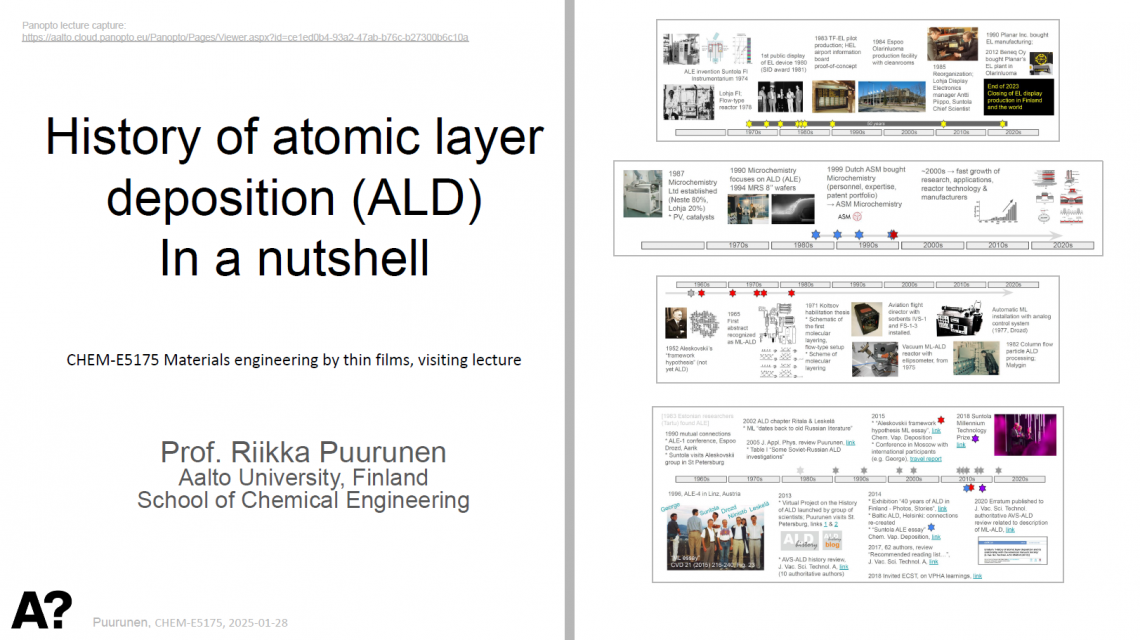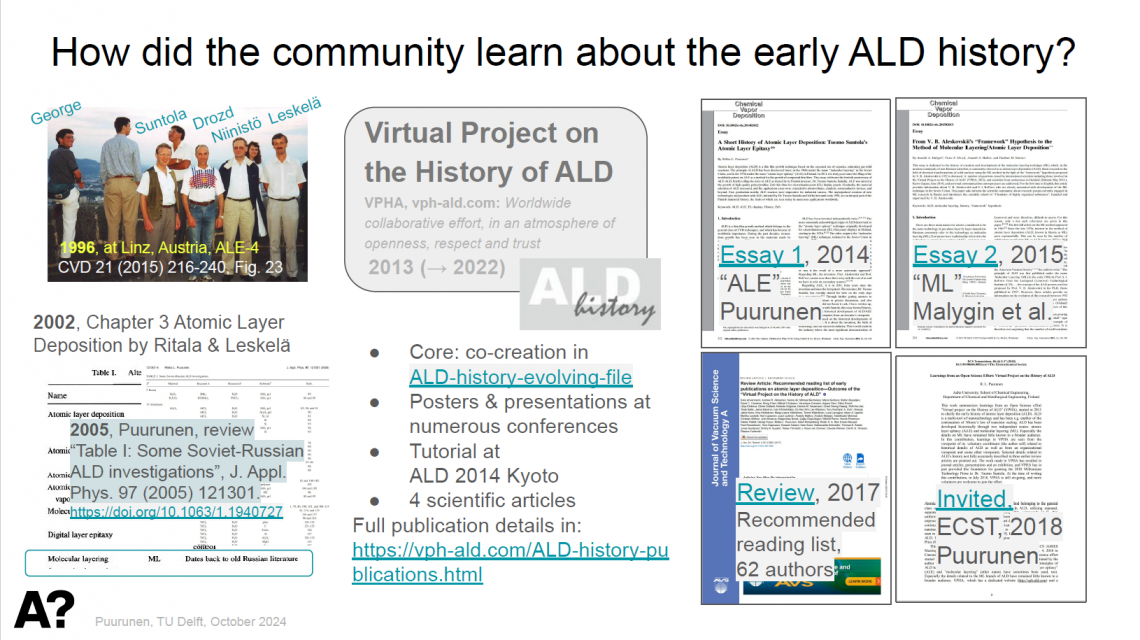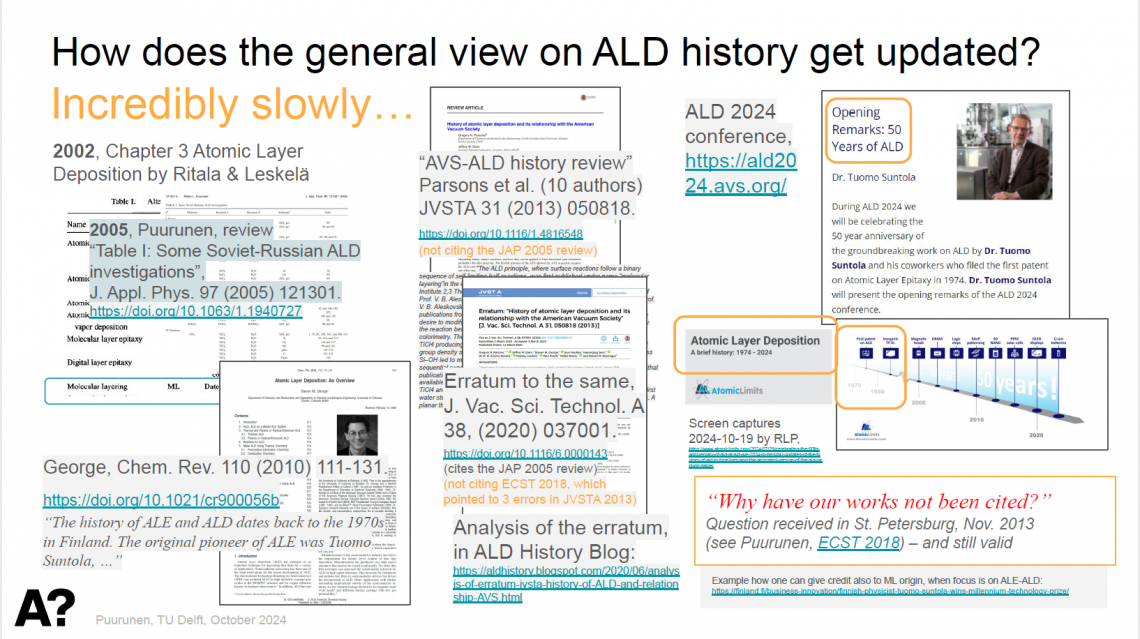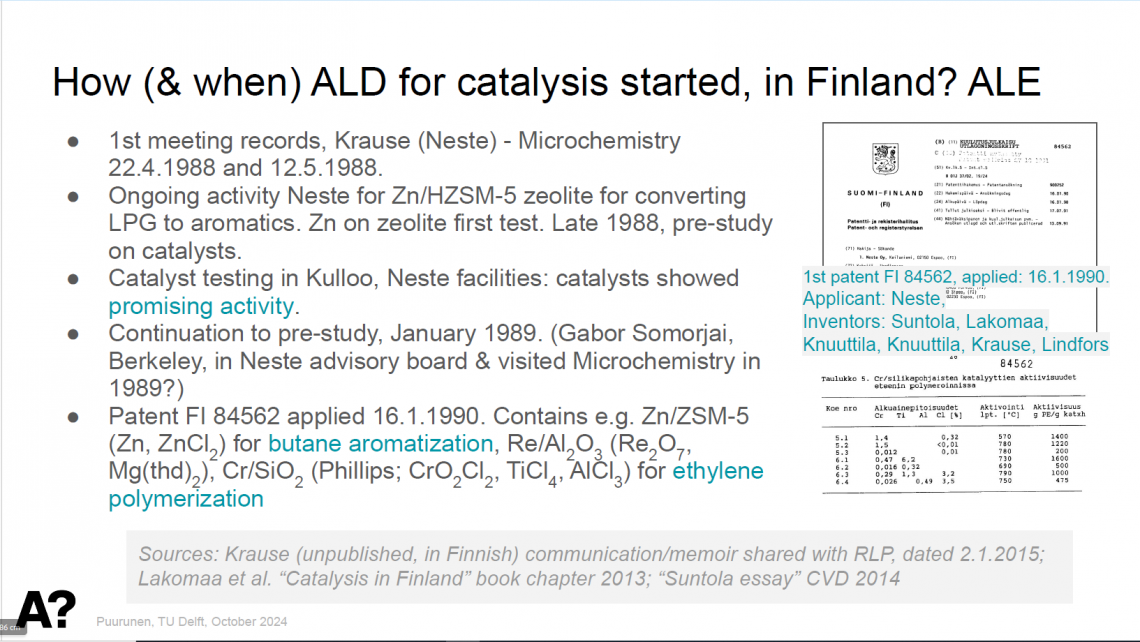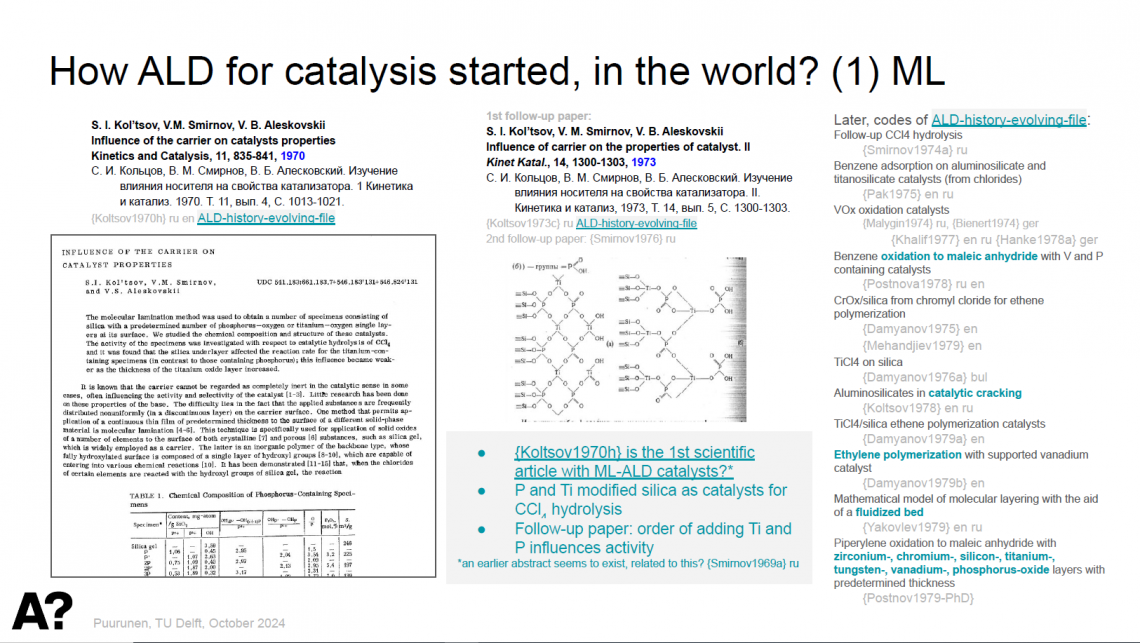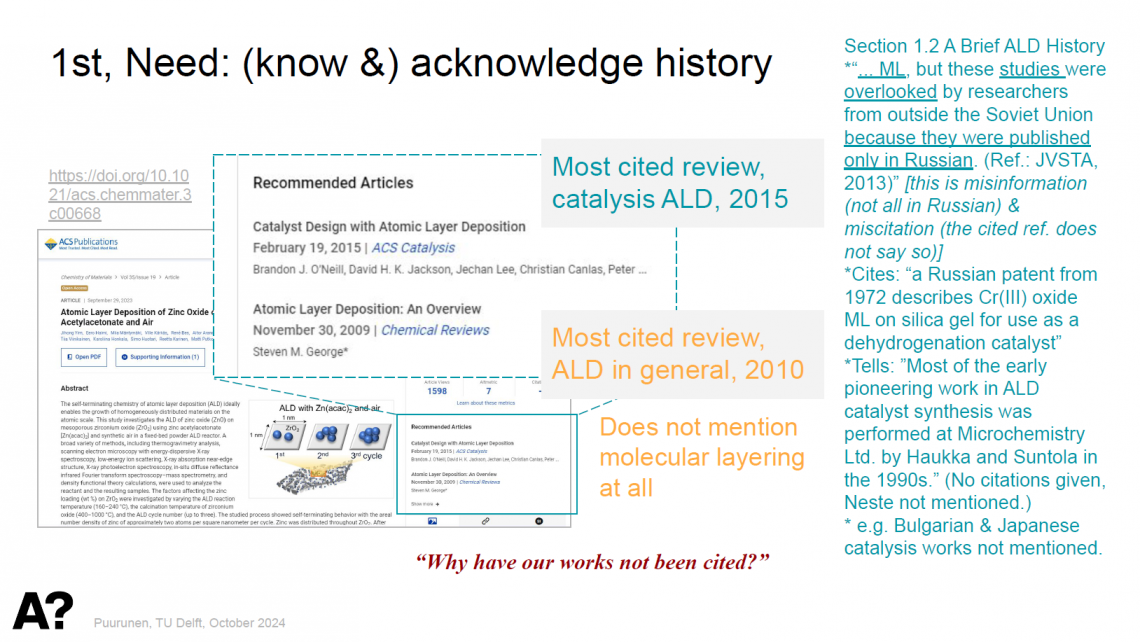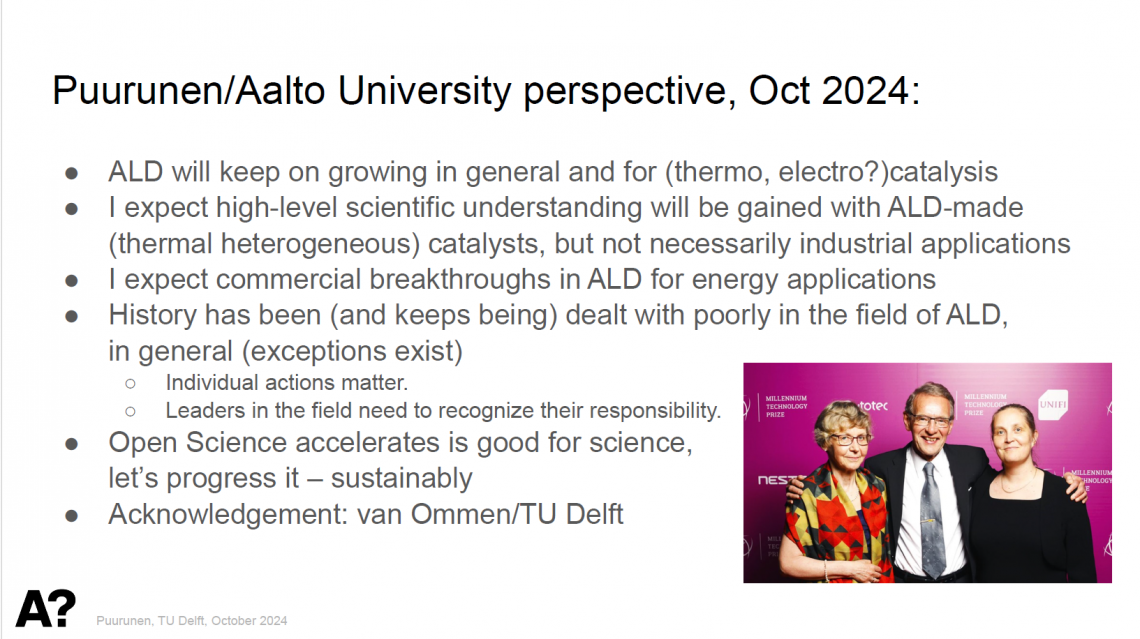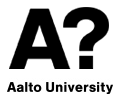Edellisessä Catalysis Professor’s Open -postauksessani (linkki tässä) laskin, paljonko maksaisi noudattaa Aallon uusia ohjeita liittyen väitöskirjoissa tehtävään terminologiatyöhön. Sain hinnaksi vuosittain Aallon laajudella miljoonia euroja, ja ison määrän henkilötyövuosia. Ounastelen, että näitä kustannuksia ei ehkä oltu otettu huomioon uutta ohjeistusta laadittaessa. Kenties on jotenkin ajateltu, että kokonaistyöajalla olevat tutkijat ja professorit tekisivät vaaditun lisätyön ihan noin vain, entisten töiden lisäksi. Vaikka yleisperiaate on, että työstä maksetaan palkkaa, jostain syystä tämä ajattelutapa ei kokonaistyöaikaa tekevien kohdalla tunnu pätevän. Ikään kuin olisimme ilmainen ja rajaton resurssi. Tietenkin työstä koituu kustannuksia, ja yhteen asiaan käytetty aika on aina jostain muusta pois.
Tässä postauksessa jatkan esimerkkilaskelmien tekemistä kustannuksista, jotka liittyvät yliopiston aktiviteetteihin. Olen valinnut esimerkit niin, että ne ovat lähellä todellisia tilanteita, joita Aallossa voisi kohdata. Tämä postaus jatkaa kontribuutiodeni sarjaa, joiden tarkoitus on auttaa yritystä Aallossa “keskittyä olennaiseen”. Aiemmat aiheeseen liittyvät postaukseni:
Esitän seuraavat laskuesimerkit:
- Komiteakokous (20 henkeä)
- Henkilöstötilaisuus (150 henkeä)
- Palautekysely, standardi vs. nopea (100 henkeä)
- Kesätyöläisten rekrytointi (20 tutkimusryhmää)
- Professoreiden omatoiminen postin haku (vuosikustannus, 50 professoria)
Laskennan lähtöoletukset ovat seuraavat:
- Professorin ja yliopiston johdon työajan kustannus on 200 EUR/h
- Muiden Aallon työntekijöiden työajan kustannus on 100 EUR/h
- Käytän näissä esimerkeissä P. Törmän mallia, jossa professorin työaika laskutetaan alkavalta tunnilta, samaan tapaan kuin esimerkiksi juristit laskuttavat työstään. Pienehköjen töiden hinta keskittyneen työn keskeyttäjänä tulee näin näkyviin.
- Kiireellisestä työstä veloitetaan enemmän käyttämällä kerrointa. On makuasia, mitä kerrointa käytetään – se voisi olla 2,3 tai 5. Näissä esimerkissä käytän kerrointa viisi.
- Työajan vertailuyksikkö on vuosittainen kokonaistyöaika 1612 h.
Kuten aiemmassa esimerkissä, lasken paljonko aktiviteetit vaativat resursseja eli A työaikaa ja B rahaa palkkakustannuksena.
Laskuesimerkit aukikirjoitettuine oletuksineen löytyvät alta. Tulokset henkilötyövuosiprosentteina ja euroina ovat seuraavat.
- Komiteakokous (20 henkeä): 4.3% vuosityöajasta, 11 kEUR
- Henkilöstötilaisuus (150 henkeä): 18.6% vuosityöajasta, 40 kEUR
- Palautekysely, standardi vs. nopea (100 henkeä): 6.2% vuosityöajasta, standardi: 15 kEUR, nopea: 75 kEUR
- Kesätyöläisten rekrytointi tutkimusryhmiin (20 tutkimusryhmää): 56% vuosityöajasta, 114 kEUR
- Professoreiden omatoiminen postin haku (vuosikustannus, 50 professoria): 74% vuosityöajasta, 240 kEUR
Laskennassa on tehty monia oletuksia. Joku muu tekisi laskennan hieman eri tavoin ja saisi hieman eri tuloksia. Toivotankin kaikki vaihtoehtoiset laskennat ja erilaiset esimerkit muilta henkilöltä tervetulleiksi. Laskut tuovat joka tapauksessa esiin sen, miten kustannukset kasvavat, kun aktiviteetteihin liittyy enemmän ihmisiä, kun ne vievät enemmän aikaa, kun käytetään professoreita vaikka työn voisi tehdä joku muu, ja kun kiirehditään.
Jos tällaisia laskuharjoituksia tehtäisiin organisaatiossa enemmän joissa kokonaistyöaikalaisten työajan kustannus huomioidaan, oletan, että kokousten määrä vähenisi ja ne olisivat lyhyempiä. Niihin osallistuisi pienempi joukko henkilöitä – tarpeelliset henkilöt, ja vain he. Isoja kokouksia ei koskaan järjestettäisi vain tiedottamista varten, koska tiedotuksen voi hoitaa tehokkaammin toisin. Turhaa kiirehtimistä vältettäisiin, koska kiirehtimisen kustannus tiedostettaisiin. Jos vielä kaikille organisaation aktiviteeteille yhteisesti asetettaisiin jonkinlainen professorien (ja muiden kokonaistyöaikalaisten) työmäärään liittyvä katto, jonka toteutumaa kenties seurattaisiin ja sen alle jäämisestä vielä ehkä jotenkin palkittaisiinkin, pikkutöitä teetettäisiin lähtökohtaisesti aina kun mahdollista muilla kuin professoreilla. Tämän tuloksena professorit (ja muu kokonaistyöajalla oleva henkilöstö) voisivat paremmin keskittyä niihin olennaisiin työtehtäviinsä, jotka lopulta tuovat myös Aallon pääasiallisen tulovirran, siis tutkimukseen ja opetukseen. Ja aikaa ehkä riittäisi siihen kolmanteenkin tehtävään, eli yhteiskunnalliseen vuorovaikutukseen.* Ja kenties, kenties, kokonaistyöaikalaiset tekisivät merkittävästi vähemmän korvauksettomia ylitöitä kuin he nykyään tekevät, ja tämä näkyisi heidän parempana työhyvinvointinaan.
Espoossa, 26.2.2025, Riikka Puurunen
*Tämä julkinen postaus on osa tuota kolmatta tehtävää eli yhteiskunnallista vuorovaikutusta, kuten aiemmatkin blogipostaukset. Ks. keskustelua aiheesta esimerkiksi: https://bsky.app/profile/rlpuu.bsky.social/post/3li75d7ww5k2k.
1 Komiteakokous (20 henkeä)
Oletukset ajankäytöstä:
- Tilaisuuden kesto 3h. Paikalla
- Johto: 1
- Professorit: 10
- Muut Aallon henkilökunta: 9
- Pöytäkirjan kirjoitus: 5 h
- Pöytäkirjan tarkastus: 2 professoria, 1 h per henki
- Pöytäkirjan allekirjoitus: 2 professoria, 5 min per henki
A Työaika
20 * 3 h + 5 h + 2 * 1 h + 2*1 h = 69 h
4.3% vuosityöajasta
B Eurot
(11*200 EUR/h + 9*100 EUR/h)*3h + 100 EUR/h*5h + 200 EUR/h*4h = 10 600 EUR
2 Henkilöstötilaisuus (150 henkeä)
Oletukset ajankäytöstä:
- Tilaisuuden kesto 2 h. Paikalla
- Johto ja professorit: 50
- Muu henkilökunta: 100
A Työaika
150 * 2 h = 300 h
18.6% vuosityöajasta
B Eurot
(50*200EUR/h + 100*100EUR/h)*2h = 40 000 EUR
3 Palautekysely, standardi vs. nopea (100 henkeä)
Oletukset ajankäytöstä
- Kysely lähetetään 100 hengelle, joista puolet professoreja
- Standardiversiossa vastaamiseen annetaan kolme viikkoa aikaa. Tällöin itse kukin voi vastata silloin kuin itselle sopii. Todennäköisesti jokainen löytää sopivan hetken vastaamiseen.
- Nopea versio: Kyselyyn pitää vastata kahden päivän sisällä. Käytetään hinnalle kerrointa viisi.
- Kyselyn mukana tulevan arvion mukaan vastaaminen vie 10 min. Käytännössä keskimääräinen vastausaika on 20 min. Laskutus tehdään alkavalta tunnilta, jolloin laskennallinen veloitus on 1 h.
A Työaika
100 * 1 h = 100 h
6.2% vuosityöajasta
B Eurot
Standardiversio: (50*200 EUR/h + 50*100 EUR/h)*1h = 15 000 EUR
Nopea versio: 15 000 EUR * 5 (kerroin) = 75 000 EUR
4 Kesätyöläisten rekrytointi tutkimusryhmiin
Käsitellään tässä kokonaistyöaikalaisten eli professorien, lehtoreiden ja tutkijoiden rekrytointiprosessiin käyttämää aikaa, ensin yhdessä tutkimusryhmässä. Lopuksi kerrotaan tulokset tutkimusryhmien määrällä – oletetaan niitä olevan 20.
Vaiheet
a. Hakutekstin kirjoittaminen (oletus: tieto aikataulusta tullut hyvissä ajoin, kerrointa ei käytetä)
- Professori: 30 min, kahdessa erässä (laskutetaan alkavalta tunnilta, yhteensä 2 h)
- Kollegat: kolme henkeä, kaikki tekee 30 min töitä kahdessa erässä (laskutetaan alkavalta tunnilta, yhteensä 2 h per henki)
b. Hakutekstin toimitus HR:lle, professori, 5 min (laskutetaan alkavalta tunnilta)
c. Hakemusten läpikäynti Workdayssa
- Ohjeiden lukeminen ja Workdayn toiminnan opiskelu vie 30 min per henki (sekä professori että kollega joutuvat opiskelemaan)
- Professori: 3 h
- Yksi kollega: 6 h
- (huomaa: Workday-vaiheeseen käytetty aika riippuu Workdayn toimintojen sujuvuudesta: miten hyvin epärelevantit hakemukset on esikarsittu ja kuinka tehokkaasti filttereitä pystyy käyttämään)
d. Haastattelut ja valinta, neljää henkeä haastatellaan
- Haastattelijoita professori ja kolme kollegaa
- Haastatteluun valmistautuminen: puoli tuntia (laskutetaan alkavalta tunnilta)
- Haastattelut tehdään yhdessä jaksossa, vie yhteensä 4 h
- Haastattelujen yhteenveto ja päätös rekrytoitavista: puoli tuntia (kaikki neljä osallistuvat)
e.Valintojen kommunikointi sähköpostitse tai muutoin HR:lle (professori)
f. Kustannukset yhteensä kaikilta osallistuvilta professoreilta (edelliset laskut olivat per professori, kokonaiskustannus kerrottava rekrytointeja tekevien professorien määrällä)
Kustannukset
a.Hakutekstin laadinta (kiireettömästi)
(A) 2 h + 3*2h = 8 h (B) 200 EUR/h * 2h + 100 EUR/h * 6 h = 800 EUR
b.Hakutekstin toimitus HR:lle
(A) 1 h, (B) 200 EUR
c.Hakemusten läpikäynti Workdayssa
(A) 2*1h + 3 h + 6 h = 11 h (B) 200 EUR/h * (1 + 3) h + 100 EUR/h * (1+6) h = 1500 EUR
d. Haastattelut ja valinta
(A) 4*1 h + 4*4 h + 4*1 h = 24 h (B) 200 EUR/h * (1+4+1)h + 100 EUR/h * (1+4+1)h * 3 = 3000 EUR
e.Valintojen kommunikointi sähköpostitse HR:lle
(A) 1 h (B) 200 EUR/h * 1h = 200 EUR
Huom, jos sähköpostivaihtoa joudutaan käymään useita kierroksia, jokaisen hinta on 1 h / 200 EUR
f. Kustannukset yhteensä kaikilta osallistuvilta tutkimusryhmiltä
Kohtien a-e yhteenlasketut kustannukset per tutkimusryhmä olivat
(A) (8+1+11+24+1) h = 45 h (B) (800+200+1500+3000+200) EUR = 5700 EUR
Jos rekrytointeja tekee 20 tutkimusryhmää, kustannukset kertautuvat vastaavasti
(A) 20 * 45 h = 900 h, 56% vuosityöajasta
(B) 20 * 5700 EUR = 114 000 EUR
5 Professoreiden omatoiminen postin haku, vuosikustannus (50 professoria)
Kuvitellaan, että postin kuljettaminen henkilökohtaisiin postilötteröihin lopetetaan kustannusten säästämiseksi. Professorit laitetaan hakemaan postinsa itse vahtimestarilta vahtimestarin kopin aukioloaikana, kun ovat saaneet sähköpostiin saapumisilmoituksen. Jos vahtimestari ei ole hakiessa paikalla, professori joutuu tekemään uuden reissun.
Oletukset
- Paperilähetyksiä saapuu kerran kuussa
- Jokaista saapumisilmoitusta kohden pitää käydä vahtimestarin luona kaksi kertaa, jotta vahtimestari on paikalla
- Yksi käynti vie 5 min mutta katkaiseen muun työn. Laskutetaan alkavalta tunnilta, eli 5 min käynnistä veloitetaan 60 min.
- Tehdään laskenta yksikölle, jossa professoreja on 50
(A) Työaika vuodessa
12 kk * 1 lähetys / kk * 2 hakukertaa / lähetys * 1 h / hakukerta * 50 (professoria) = 1200 h, 74% vuosityöajasta
(B) Eurot vuodessa: 1200 h * 200 EUR/h = 240 000 EUR
Posted by Riikka Puurunen
Associate professor, Catalysis Science and Technology, at Aalto since February 2017

